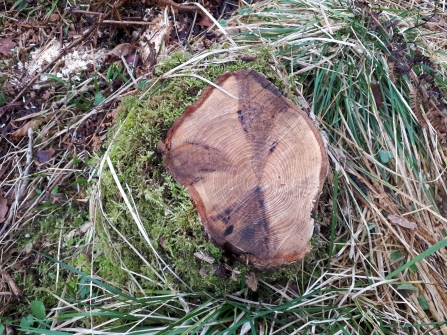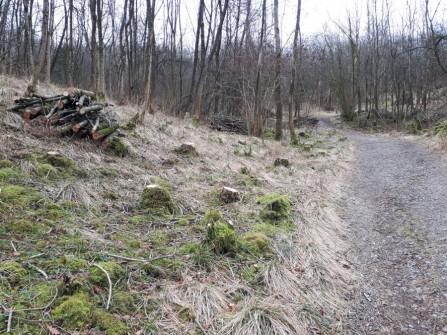What is ash dieback?
First confirmed in the UK in 2012, ash dieback, also known as 'Chalara', is a disease of ash trees caused by a fungus called Hymenoscyphus fraxineus. This disease has spread quickly and is now affecting woodlands across the UK, leading to the death of tens of thousands of trees. It has already caused widespread damage in continental Europe.
Ash dieback symptoms
The main symptoms of ash dieback are:
- Dead branches, particularly in the high canopy.
- Blackening of leaves which often hang on the tree
- Discoloured stems often with a diamond-shape lesion where a leaf was attached
- Trees may eventually drop limbs, collapse or fall
The symptoms are often easier to spot in mid-late summer, when a healthy ash should be in full leaf. It becomes much harder in autumn, when leaves are naturally changing colour and falling.
Once a tree is infected the disease is usually fatal, either directly or indirectly by weakening the tree to the point where it succumbs more readily to attacks by other pests or pathogens, such as honey fungus. These secondary pathogens can cause butt or root rot, leading to the tree falling.

Ash with dieback
(c) Jono Leadley
How does it spread?
The disease may spread locally (over tens of miles) by wind dispersal. The reproductive stage of the fungus grows on the previous year's fallen leaves, producing fruiting bodies that release spores between June and September.
These spores are dispersed by the wind and settle on the leaves of healthy trees. If a healthy tree receives a high enough dose of spores, it too will become infected. Over longer distances, the disease may be spread by the movement of infected ash plants.
What can be done?
There is no cure for ash dieback, but some trees are less susceptible to the disease. Investigating this natural resistance could be the best way to secure the future of the UK's ash trees.
As a result of the infection ash trees become very brittle and unstable and can pose a serious health and safety risk, especially in places where infected trees grow beside roads, buildings and footpaths and are likely to pose a threat to public safety.
How are we tackling the problem?
We are surveying our estate to identify the areas where trees can be left to follow natural processes and it is hoped that some may have resistance to the infection. However there are areas where we must take action, as the risk to public safety is considered unacceptable. In some areas we will be carrying out works to fell infected trees where they pose a significant risk to the public and our staff or volunteers.
Before we fell the infected trees, we will carry out ecological surveys to check for the presence of protected species such a bats and badgers, enabling the appropriate mitigation to be undertaken. We may have to close paths, roads or whole sites temporarily while we undertake the works.
How are we replacing the trees?
We will allow natural regeneration to take place with new trees growing from the seed bank in the newly open areas. We will be actively promoting mixed species regeneration (not allowing one species to dominate) and will take care not to encourage non-native invasive species to take hold. Where necessary we will re-plant with native species.

Cut ash trees with ash dieback at Grass Wood.
(c) Jono Leadley
